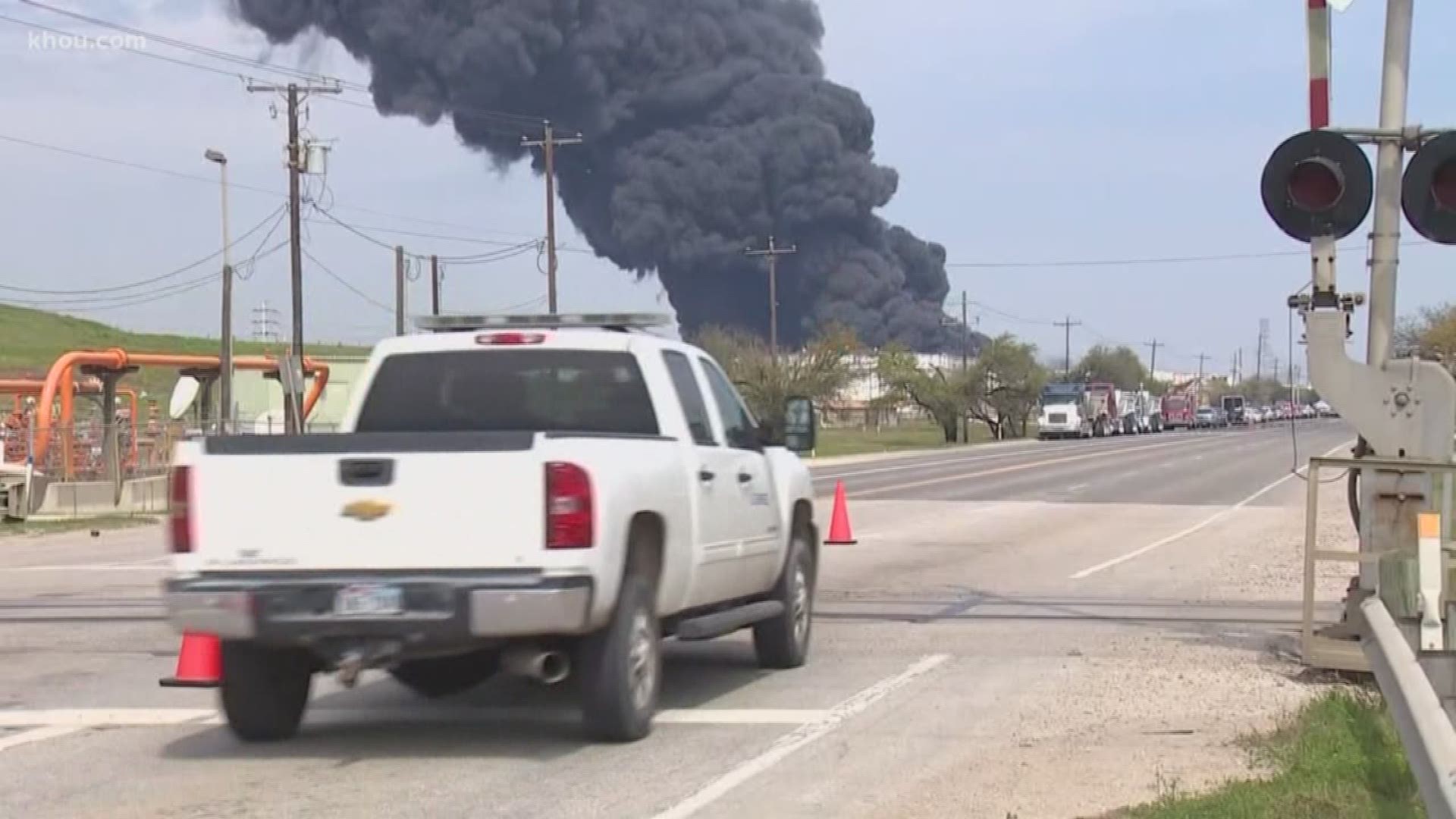HARRIS COUNTY, Texas — The fight for more transparency and regulation is moving from Harris County to Washington D.C.
Harris County Attorney Vince Ryan fears a recent rollback on chemical safety rules could lead to more explosions.
It's why Harris County is now joining 14 attorney generals across the U.S. to sue the Environmental Protection Agency.
In December 2019, the EPA reversed a series of stricter rules that focus on how companies store chemicals and deal with chemical emergencies. The rules were part of a 2017 amendment to the EPA"s chemical rule. That amendment was a federal response after 15 people were killed in West, Texas when a fertilizer plant exploded.
Ryan says the EPA reversed the regulations because they're no longer reasonable, but Ryan worries that the change "will increase the risk of explosions and threaten public safety."
HARRIS COUNTY SETS ITS SIGHTS ON CHEM FACILITIES:
So, as lawyers duke it out in court, the Harris County Fire Marshal is making major changes. Laurie Christensen and her team are preparing to walk right up to chemical facilities to have a look inside.
Because, as it stands right now, no matter how nosy you are, you may never actually see the hazards next door until it's too late.
"We just want to know what’s there," said Christensen.
In the weeks after last months explosion at Watson Grinding and Manufacturing, KHOU has worked to track down chemical facilities near you. While maps like these pinpoint hazardous chemicals, detailed information is hard to find. No matter who you are.
"There was a gap and that gap was, we need to know more about these facilities," said Robert Royall who is an Assistant Chief with the Harris County Fire Marshal's Office. He oversees the Haz-Mat unit.
So, starting March 2, members of the Harris County Fire Marshal's Office will go door-to-door, "with a paper document and we’re going to go through and start marking these things out," said Christensen.
"Those that have firefighting foam, we’ll be checking to see how much they have, and trying to determine of they have the right extinguishing agents,"said Royall. "And if they don’t, where they’re going to get those resources from."
That information will be used to create a Haz-Mat Pre-Incident Plan for chemical facilities. Harris County Commissioners just approved funding to cover a bigger staff and more Haz-Mat equipment.
"So that when an incident does occur, we are responding quicker," said Christensen. "We are responding with more information and now we can get that information back to our emergency operations center that allows our community to know more."
GET MORE INFO SENT RIGHT TO YOUR PHONE NOW:
TEXT THE WORD: chemicals
TO: 713-526-1111
to get a list of public meetings where you can learn more about hazardous chemicals near you. Or, click here.
WHEN IT COMES TO CHEM FACILITIES, WHAT DO YOU HAVE A RIGHT TO KNOW?
Thousands of chemical facilities are scattered across Texas. But, unless you see a smoke stack at a large plant, you may not know what exactly is stored next door to your home.
So, in 1986 the Emergency Planning and Community Right-to-Know act was passed. It was created in response to concerns regarding the environmental and safety hazards posed by the storage and handling of toxic chemicals. The U.S. Environmental Protection Agency explains that the concerns “were triggered by the 1984 disaster in Bhopal, India, caused by an accidental release of methylisocyanate. The release killed or severely injured more than 2000 people.”
To reduce the chance of a disaster like that in the United States, Congress imposed requirements for federal, state and local governments.
The Community Right-to-Know provisions increase the public’s knowledge and access to information on chemicals at individual facilities, their uses, and releases into the environment.
In 2018 the America’s Water Infrastructure Act was added to the emergency release notification and the hazardous chemical inventory reporting requirements. That legislation requires state response commissions to notify the applicable state agency of any reportable releases and provide community water systems with hazardous chemical inventory data.
So what are the Community Right-to-Know requirements? Facilities handling or storing any hazardous chemicals must submit Material Safety Data Sheets to state and local officials and local fire departments. Hazardous chemicals are defined under the Occupational Safety and Health Act and its implementing regulations. MSDSs describe the properties and health effects of these chemicals. Facilities must also submit an inventory form for these chemicals, to state and local officials and local fire departments.
So, in Texas, the Texas Commission on Environmental Quality oversees “Local Emergency Planning Committees” or L.E.P.C.’s. They are voluntary organizations that collect the information required under the Community Right-to-Know Act. Membership in a L.E.P.C. comes from different organizations including the chemical industry, fire departments, emergency medical services, law enforcement, city or county emergency management and residents.
And each L.E.P.C. holds public meetings to discuss chemical facilities that impact the public.
ALSO POPULAR ON KHOU.COM

